A Point of Reckoning – Part III
by
Clifford E Carnicom
Oct 06 2017
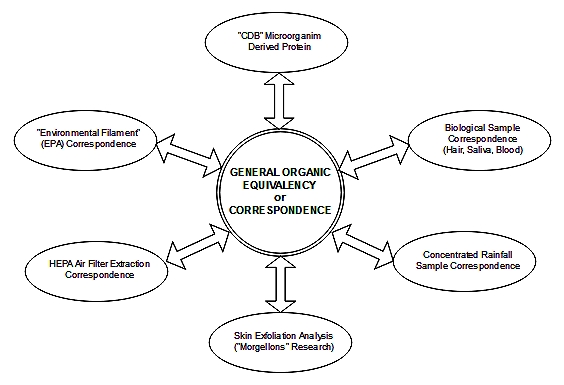
A common set of organic components has been identified within a wide variety of environmental and biological samples. These components are comprised of organic functional groups and structures that are found in each of the following sample types:
- The “Environmental Filament” material that has been under investigation by Carnicom Institute for a period that now approaches two decades. This is the same material type that was originally sent to the U.S. Environmental Protection Agency in January of the year 2000 with a request for identification on behalf of the public welfare. The Agency refused to perform that investigation or examination.
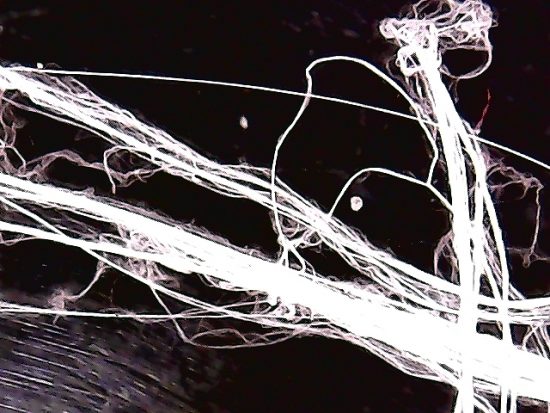 |
|
Unusual airborne “Environmental Filament” material of identical nature sent to the U.S. Environmental Protection Agency in 2000. A request for identification was made at that time. The request was not fulfilled.
|
2. An isolated and specific protein that is derived from the microorganism tentatively identified as a ‘cross-domain bacteria (CDB) as described more extensively on this site. This protein is described in greater detail in the paper entitled, Morgellons: Unique Protein Isolated and Characterized (Aug 2017).
3. An extraction from a HEPA air filter that has run continuously for approximately one year. Filters that have been subjected to both indoor and outdoor air show similar sample materials to be collected.
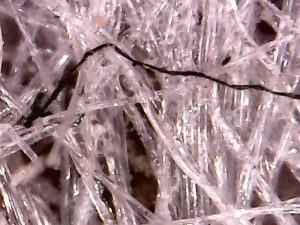 |
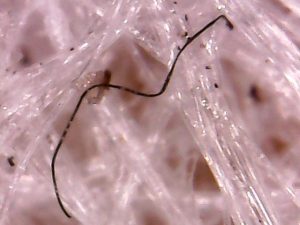 |
|
Typical HEPA air filter (indoor and outdoor) sample material used for extraction and subsequent infrared analysis of organic composition. These samples are described in more detail in the paper entitled “A Point of Reckoning: Part I”, Aug 2017.
|
|
4. Organic extractions from concentrated and multiple rainfall samples.
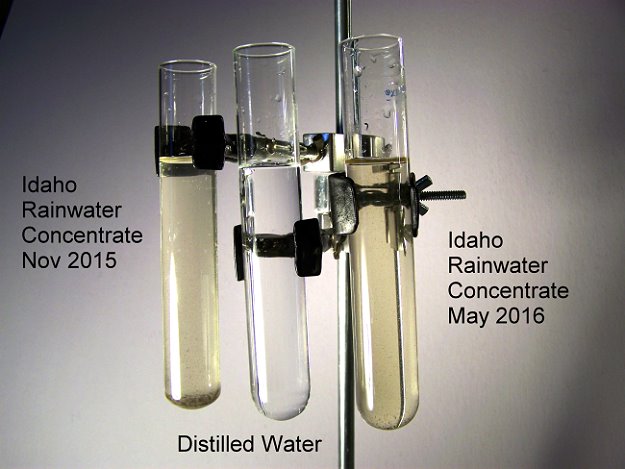 |
|
Concentrated rainfall samples in comparison to distilled water. Contamination of the water is visually apparent. Additional information regarding rainfall analyses is available on this site.
|
5. A set of biological samples, including that of human hair, saliva and blood have been examined via infrared analysis as a portion of this report. Hair samples require chemical digestion and all samples require the complete removal of water from the sample.
6. Skin exfoliation samples from an individual that exhibits symptoms characteristic of the Morgellons condition have also been examined via digestion, digestion and infrared techniques.
 |
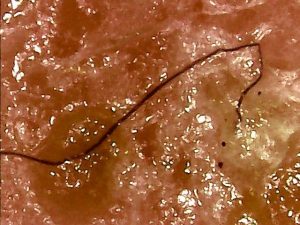 |
|
Observed skin that exhibits symptoms |
Filament sample recorded (one of several)
|
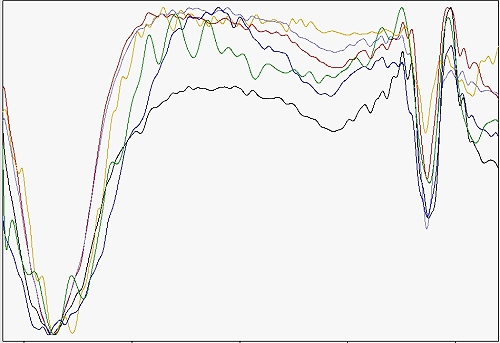 |
|
Infrared spectra of a variety of environmental and biological samples that share a common set of organic components. The sample types include the “Environmental Filament”, a specific and isolated microorganism protein, a HEPA air filter extract, a concentrated rainfall sample, hair, saliva and blood samples, and a skin exfoliate sample. Although all sample types have been collected and prepared by vastly different methods and are of varying concentrations, a set of organic functional groups is common to each sample. These occur within the ‘functional group window’ of the infrared spectra shown. |
The laboratory methods of analysis include, in part, that of:
Organic extraction methods
Liquid column (low pressure) chromatography
Ultraviolet spectroscopy
Visible light spectroscopy (colorimetric test)
Bradford test for protein
Evaporative techniques
Near Infrared Analysis
Infrared Analysis.
A database of more than 6500 infrared spectra (National Institutes of Technology –NIST and collected) has been used to prepare this research paper.
The functional groups within the analyses that are of heightened interest and that appear to share commonality include those of the phenols, organic acids, isothiocyanates, and the amides. There are numerous implications within this set of functional groups and their combined properties that provide a basis for extended research, investigations trials,and the aggregation of resources and funding for the same in the future .
Clifford E Carnicom
Oct 06 2017
Born Clifford Bruce Stewart
Jan 19 1953



